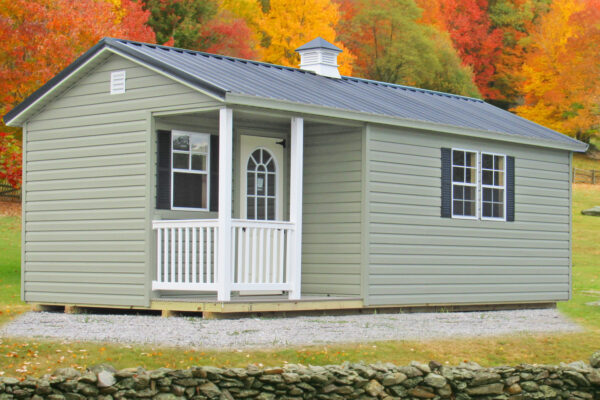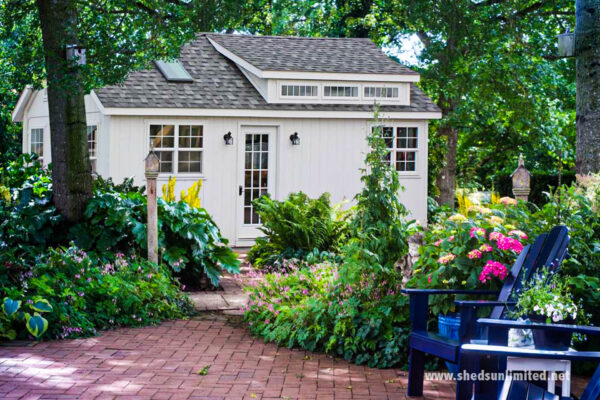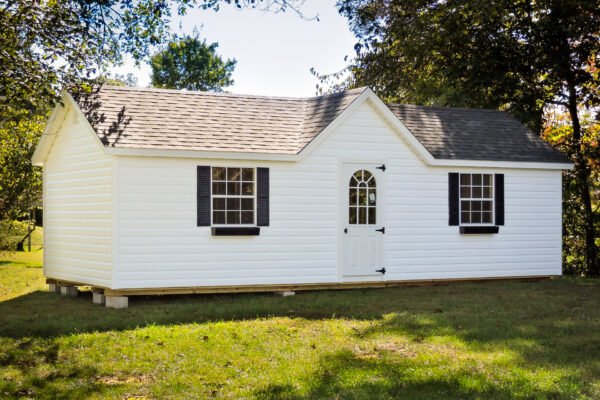Wondering how to convert a shed into a legal, livable home? It can be confusing. But in this article we describe the costs of a converting a shed into a home, the steps involved, and answers to questions regarding insulation, heating, power, and more!
Ready to be informed? Keep reading!
Contents
Is A Shed Home Worth the Bother?
Yes! While shed homes are not the option for everyone, they offer incredible benefits. If your local government allows legal shed homes, then this housing option will give you financial freedom by eliminating a 30-40 year mortgage. Plus, converting a shed into a home is much faster than having a large home built. Want one more perk? A shed home reduces your carbon footprint.
Okay, let’s dig into the practical details about shed homes.
How much does it cost to convert a shed into a house?
If you are thinking of converting a shed into a home, the cost of the shed itself will be around 15% greater when built to the 2018 International Residential Code. Additionally, you will have foundation, plumbing, electrical, insulation, interior finishing, and gutter costs. All of these costs (including the cost of the shed) add up to around $20,000 – $27,000, or more if you opt for extra amenities or fixtures.
Check out our table for a quick break-down or keep reading for more in-depth information.
| Item: | Price (based on a 512 sq ft shed home): |
| Foundation | $3,000 – $6,000 |
| Plumbing | $1,500 – $2,000 |
| Electric | $3,500 |
| Insulation | $4,000 – $6,000 |
| Flooring | $2.00 – $3.50 per sq ft (plus installation fees) |
| Sheetrock | $1.50 per sq ft |
| Gutters | $5 – $6 per linear ft |
| Fixtures (Cabinets, ect) | Up to the person |
Cost to Convert a Standard Shed into a Home Yourself
Here’s the deal: It’s not a good idea to buy a shed from Lowes or other shed builders who do not craft their sheds according to the 2018 International Residential Code (IRC). Technically, you could still convert the interior into a shed home, but power companies will not service your shed home if you lack acceptable building permits.
Additionally, once you try to get your new shed home up to code, you will most likely be denied a permit by the building officials.
Bottom line: If you want to convert a shed into a home, do not buy just any shed. Based on years of experience working with customers who want to convert sheds into homes, we strongly recommend buying sheds built according to the IRC (2018).
Base Cost for a Shed
Now you know: don’t run to Home Depot for a Tuff Shed. You may feel you can easily convert this shed into a tiny home, but you’re mistaken. To have a legal shed home, the shed base must be built to the IRC (2018).
Sheds built to the IRC (2018) have an additional upcharge price. For example, our tiny home shells (sheds ready to be converted into living homes) are sold at an 15% upcharge. This cost must be taken into consideration before making a budget for a shed home. That said, you can get a shed built to code for as little as $8,000!
The reward is immeasurable! When you know that your shed is built to residential code, you can work on the interior without worrying about the legality of your new shed home. It’s always a good idea to verify the specific building codes of your local government before buying a shed and converting it into a home.
Foundation
Is a foundation necessary for a shed home? In short, yes. You may get ahead of yourself and finish out the interior of your new shed home without a foundation. As the shed settles, you’ll discover cracks in your sheetrock. Furthermore, sheds sitting on the ground may accumulate extra moisture, leading to the bottom rotting out.
It’s recommended to have a foundation made with concrete footers. Typically, a solid foundation made from footers ranges from $3,000 to $6,000. Of course, the exact price varies according to the size of your shed home.
Plumbing
Getting your plumbing hooked up costs about $1,500 to $2,000.
Electrical
When creating a budget for your shed home, figure approximately $3,500 for completing your electrical needs.
Insulation
You want to ensure your shed home is insulated. This means that your shed stays cool on stifling hot summer days and warmer in the dead of winter. Although it’s more expensive, we recommend you choose spray foam insulation. It costs around $3.50 per square footage to have someone spray foam your shed home – around $2.50 per square foot for flooring and ceiling and $2.50 per linear square foot for walls. For a standard shed home size (512 sq ft), that costs around $4,000 to $6,000 for complete insulation.
Gutters
Gutters cost around $5 to $6 per linear square foot.
Interior Finishing
Now, we are getting to the fun part! Your shed home is up to code and hooked up to your needed power sources. It’s time to design the interior of your shed home.
Flooring
Typically, flooring costs $2.00 to $3.50 per square foot. If you’re looking for someone to install the flooring for you, then you will incur additional installation costs.
Walls
To finish off your walls with sheetrock, you should figure around $1.50 per square foot.
Fixtures
Now, this is where you hold a lot of power in your hands. Wanting a shed home with all the “bells and whistles”? That’s totally fine! The budget is in your hand.
Can you turn a Shed into a Legal, Living Home?
In short, many areas of the United States – like Kentucky – allow you to legally convert a shed into a livable home. But there are a few important things to know.
- Check the building codes in your local municipality to ensure shed homes are legal.
- Be wary of rent-to-own sheds; it isn’t legal to finish the interior while you still owe money.
- Buy a shed that is built to residential grade (2018 version of the IRC).
Check Your Local Building Codes
Building codes for sheds are nuanced since they vary extensively across states, cities, towns, and counties.
However, it is legal to convert a shed built to IRC (2018) into a home in Kentucky. In order to be in compliance with building codes, ensure you receive a residential building permit prior to constructing your shed and converting it into a home. Assuming you want to add gas, electric, and/or water hook-ups, further permits will be required. Permit applications can be found on your local governments website.
For more information on specific local regulations, read our articles on tiny home regulations in Kentucky and building permits in Tennessee.
Regardless of your specific location, it’s imperative you check with your local government to ensure that you have all the necessary building permits before the building process begins.
Rent-To-Own Sheds Don’t Allow Legal Living
Are you thinking about buying a rent-to-own shed and converting it into a home? This is a tempting option considering that it frees you from debt or enables you to obtain a shed even if your credit score is low.
But, put a pause on these plans.
Most rent-to-own sheds do not allow you to finish the interior of the shed while you are still making payments to the company. Therefore, you will have to hold off on your plans to live in a shed home until you are all paid up.
Additionally, if you do decide to finish out the interior, even though it is illegal (we do not advise this!), you put yourself at risk for homelessness. If you don’t make the payments, the distributor can come onto the property and remove your shed.
To make matters worse, since you violated the terms of agreement, you could incur additional charges. What a nightmare!
Residential Grade: Built to Convert a Shed to a House
Hopefully, you are now convinced that the legal aspects of a rent-to-own shed do not make it an effective or legal option for a shed house. We understand that may have put a wrench in your plans.
But we are thrilled to offer sheds built to residential grade!
What does this mean for you?
Because our tiny house shed shells are built to the 2018 International Residential Code, you can rest assured that your shed home will be compliant with building codes. Customize the exterior of your new home – siding, colors, doors, windows, loft, porches, and more!
Now, it’ll be up to you to design and create the interior of your dreams.
Take a glimpse at a few of the tiny house shed shells we offer.
The High Barn
Whether you want to add a shed home as a room for your teenage child or as an office, the High Barn’s tall ceilings allow for a loft as a place to rest or a bit of extra storage. You may find that this is the favorite aspect of your new shed home!
The Ranch
As our most popular tiny house shed shell, the Ranch provides a more spacious living option. No need to feel cramped and crowded every day. Take advantage of the porch to enjoy fall’s foliage, spring’s blossoms, and summer’s cool breeze.
Is it cheaper to buy a shed home or have it built?
Generally, it is cheaper for you to go out and buy your materials to build a shed home. But we do not recommend it. Why not? These are the consequences of building a shed home yourself:
- Before beginning the building process of the actual shed, you have to get residential building and zoning permits.
- If you fail to get building codes then try to add power, power companies may not service your shed home.
- And this is the kicker: there is a lot of time and headache that goes into creating your own shed home.
Steps to a shed to house conversion
- Ensure the shed you buy is up to building code
This means that you check with the company you buy the shed from to ensure that everything is built to the IRC (2018) and is compliant with your local government.
- Have a good foundation for your shed
If you lack a proper foundation, once the shed settles, the sheetrock may crack when you’re finished.
- Electrical and Plumbing inspection before interior work
So you finished the electrical and plumbing in your shed home and now want to finish out the interior? Just hold on. Before you add sheetrock and start painting, you will want to have the electrical and plumbing inspected. Otherwise all the hard work you do will be ruined when the inspector has to open up your walls to check out the plumbing and electrical work.
- Have fun!
Now that your shed home is up to code and you have plumbing and electricity, it’s time to finish out your shed home to your tastes. Let the party begin!
Shed Home Extension Ideas
Feeling like your shed home has you too cramped? Needing extra inspiration for extending space? Consider adding one of the following to your shed home:
Lean-To Roof
This can give you more space to store things such as garden tools, grills, and other equipment, while still providing protection from the elements.
Grape Arbor
Let’s face it. Summer can be brutally hot and muggy. With a grape arbor, you’ll be able to take the party outside, under the shade of the vine. And how could we forget the delicious, organic grapes!
Grill/BBQ area
Your summer parties could use a bit of spice. Make an area next to your shed home to grill and invite loved ones over. Chat while the veggies sizzle over the fire.
Workshop
Maybe you’re an artist in need of space to adequately think creatively. Consider sectioning off a portion of your shed home where creative flow can run thick and plentiful.
Sunroom
Light continues to add mental stimulation to our life and causes us to have a better perspective. With a sunroom, you soak in the rays even in harsher weather.
Deck/Porch
Really, this is like an extra room. Add some chairs, sip some tea, and breathe in the fresh summer air.
Shed Home Exterior Ideas
We all want a shed home with a wonderful exterior. Below are a few ideas to get your brain going:
- Landscaping
- Lighting
- Mural
- Clever potting
- Swing
- Hammock
Can you insulate a shed home?
Yes, every shed home can and should be insulated. This will improve the overall experience within your shed home; insulation keeps your shed cooler in the summer and warmer in the colder months.
Can you heat a shed home?
Yes, you can heat a shed home. The cheapest and most beneficial way is through a mini-split. The whole unit will cost around $1,500. At face-value, that may seem expensive, but there are many benefits of a mini-split:
- Easy to use
- Heating and cooling
- Energy efficient
- Makes healthier air
- Ductless options
- Space conscious
- Quiet
Can you turn a Lowes shed into a tiny home?
No. Lowes sheds are not built to the IRC (2018) and therefore can not be converted into legal shed homes.
Can you turn a Home Depot shed into a tiny home?
No. Since Home Depot sheds are not built to the IRC (2018), you will not be able to convert them into a legal shed home.
FAQS
How can I cool my shed without electricity?
Without electricity, it will be difficult to keep your shed cool on hot, summer days. However, there are multiple ways you can cool your shed without the use of electricity. Consider some of the following:
- Roof vent
- Cupola
- Extra windows
- Proper insulation
- Sky light with an opening
- Shade of trees
- Roof with reflective materials
- Place windows on opposite sides of a shed
Can a tuff shed be used as a home?
No. A tuff shed is simply a shed. Tuff sheds are not built to IRC (2018) building code which do not make it an easy solution for a shed home. Any permits that you need are your responsibility.
How Long will a Shed House Last?
If built right, shed houses are designed to last as long as a regular house. That said, a quality shed house can last for thirty to forty years.
What is the cheapest way to power a shed home?
If you are adding a shed house on a property close to a main building, it will be cheapest just to connect to the power in the main house through an extension cord. Of course, this is not an option for every shed home.
Wrapping It Up…
Well, there you have it. And hopefully, you have a lot more clarity about how to convert a shed into a home.
If you’re looking for a shed built to the IRC (2018), we offer a wide range of tiny house shells including customization through our 3D Builder.





